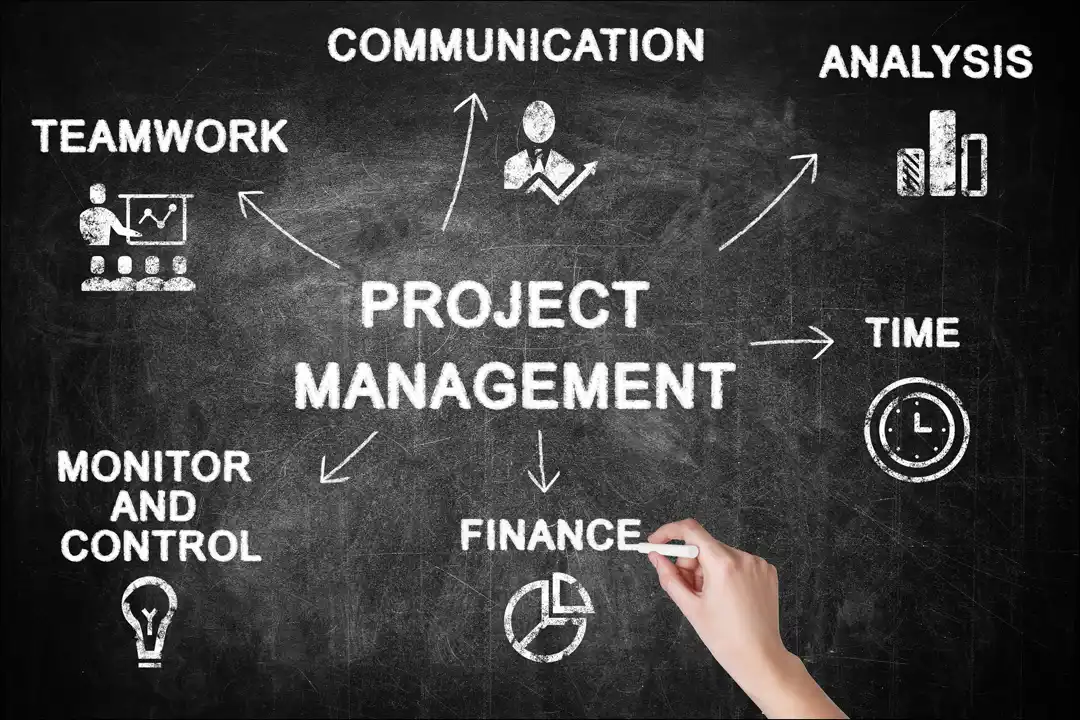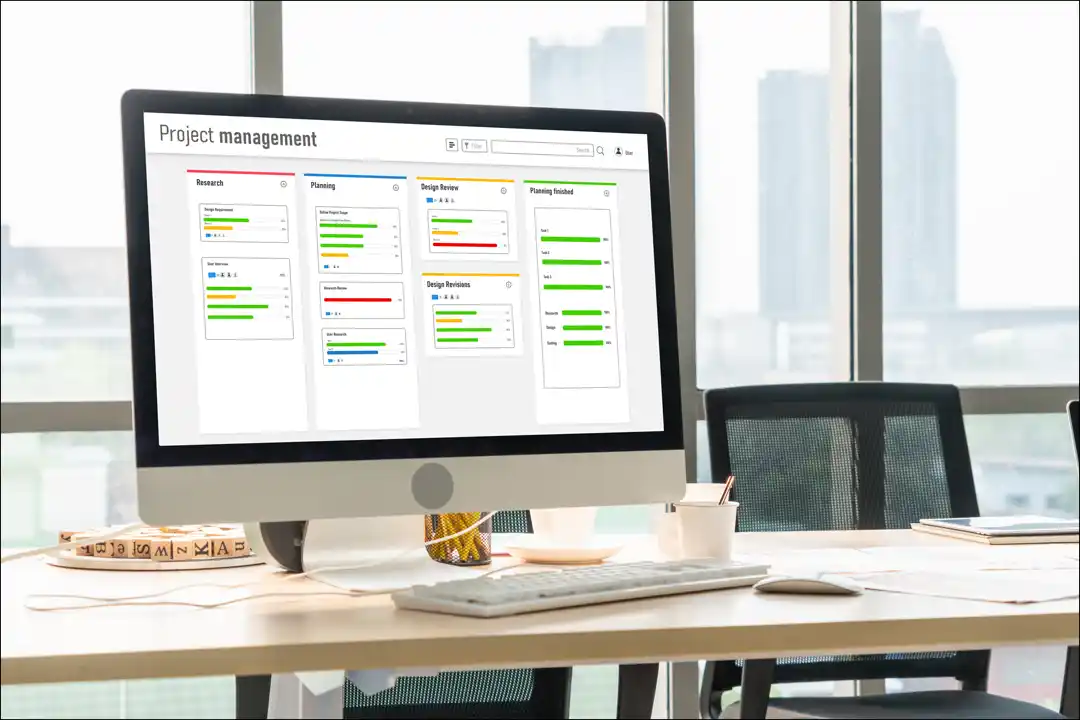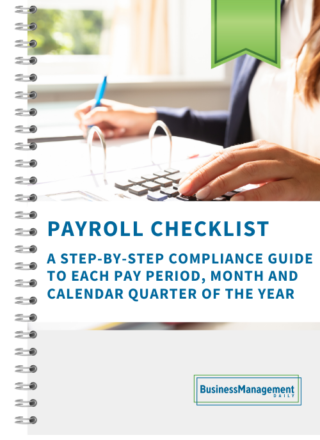Project management phases explained
 Breaking down projects for success
Breaking down projects for success
Much to many project managers’ dismay, projects don’t develop and complete themselves.
Instead, it’s up to an organization’s project team to brainstorm, develop, and execute successful projects, which is often easier said than done.
Evidence shows that 39% of projects fail due to poor planning. The planning phase and the rest of the project management phases are critical.
Instead of visualizing a project as one giant task, it’s far more effective to break it into smaller, more digestible phases.
Enter the 5 phases of the project management life cycle.
According to the Project Management Institute (PMI) and the Project Management Body of Knowledge (PMBOK), a project’s lifecycle consists of the following phases:
- The project initiation phase
- The project planning phase
- The project execution phase
- The project monitoring phase
- The project closure phase
Each phase is equally important in a project’s overall lifecycle, so utilizing all five is essential.
Learning how the phases work will help you succeed with your next project.
In this guide, I’ll teach employers and project managers everything they need to know about the 5 phases of the project management lifecycle, so don’t go anywhere.
Understanding the project management lifecycle
As a methodology, a project’s life cycle refers to all its stages, from initial conception to completion.
Project management phases act as a roadmap for a project’s lifecycle, as each phase will guide you through the beginning, middle, and end.
Breaking a project down into 5 phases will help you:
- Determine a project’s feasibility
- Make your project goals more achievable
- Identify and eliminate bottlenecks in your workflows
- Form KPIs (key performance indicators) and other metrics to help measure your success
- Come up with a realistic project timeline
Project phases have many benefits and are worth adding to your project management process.
Proper project planning and execution will also help you avoid wasting money. Research by the Project Management Institute found that organizations waste an average of $122 million out of every $1 billion invested due to poor project performance.
This is because they haven’t taken the time to flesh out projects into measurable phases and instead try to tackle the whole thing at once.
If you’ve ever taken on any project before, you probably know how daunting it can sometimes be. Unexpected developments tend to rear their head at the worst moments, especially if you don’t take the time to consider the full scope of the project.
The five phases of the project management lifecycle exist to optimize workflows, limit unexpected developments, and ensure project deliverables go out on time.
They will also help you track progress meaningfully by developing relevant KPIs.
The 5 project management phases explained
Now that you know more about the purpose and benefit of the 5 phases of project management, let’s learn how to use them in future projects.
As stated before, the 5 phases are:
- Initiation
- Planning
- Execution
- Monitoring
- Closure
These phases mirror the structure of a story. There’s a beginning (initiation and planning), a middle (execution and monitoring), and an end (the project close phase).
Let’s take an in-depth look at each phase.
Phase #1: Initiating the project
A project always begins with the planning phase, right?
This is incorrect, as every project starts with the initiation phase.
After all, you can’t start planning for a project that hasn’t yet been developed or approved. Thus, the initiation phase aims to A) develop the project from scratch and B) determine if the project even needs to happen in the first place.
Once your stakeholders and team members agree that the project is necessary, you can move on to the planning phase.
This stage is also when executive approval occurs (if it’s required).
Before a project can come to fruition, your organization has to determine its:
Purpose and business case
In other words, why is this project a necessity for your business? Are there any other more cost-effective avenues you can take to avoid taking on the project?
For the investment to be worthwhile, your organization must agree that the project cannot be ignored.
Let’s say your organization is undergoing a change management project and is implementing a new training program for your IT staff.
Project purpose: You’ve recently started implementing AI tools and software at your organization, and your IT staff needs to get up to speed with how they work. This is an absolute necessity for your business, as you intend to make heavy use of AI technology, so your IT staff needs to be able to resolve any issues that arise with it.
Upon further analysis, you discover that implementing this training program is the most cost-effective option, so you decide to proceed with the project.
The primary benefits
Will this project help your business grow, improve, or add an important new capability?
Ask yourself if the benefits truly outweigh the risks or if it would be better to return to the drawing board and draft something new.
Including risk management in this way is crucial, as you don’t want to be blindsided by an unforeseen risk later in the project’s timeline.
Benefits: For our fictional scenario, implementing the AI training program for IT staff will make them more effective at resolving team members’ issues, which is a clear benefit. Also, you stand to gain a lot from your newly obtained AI tools, so your IT staff must know everything about them.
The project’s deliverables
What type of deliverables does your team need to knock out during the project’s duration? A deliverable refers to the output you want to see by the end of your project.
A deliverable, such as products, documentation, and facilities, can be virtually anything.
There are intangible deliverables like increasing brand awareness, reducing turnover, and training new staff. These deliverables still exist; you can’t hold them in your hands.
Deliverables: You’re working with intangible deliverables for the AI IT training program (i.e., passing grades for the training modules).
 Defining what success looks like
Defining what success looks like
You need to define your end goals before you start planning the project. True project success is next to impossible without knowing what you ultimately want to achieve.
Without clearly defined project goals, you won’t have a clear stopping point, which may cause the project to continue indefinitely (or bloat in size, but more on scope creep in a minute).
While you’ll discuss the project schedule in more detail in the next phase, it’s essential to have at least a vague timeframe in mind during the initiation phase.
Success metrics: For the AI training program, success will take several forms. Since it’s a change management project, you’ll first have to obtain buy-in from your IT staff, which is a victory in itself. From there, you’ll need them all to engage in the training and pass the end examination.
Phase #2: Planning the project
Now that you’ve got the ball rolling, it’s time to start planning for the execution phase. During the planning stage, you’ll need to:
Set the project’s scope
If you don’t clearly define your project’s scope during the planning phase, you may experience the dreaded scope creep.
This occurs whenever a project’s scope keeps increasing in size after its initiation without any control procedures in place. An example would be an onboarding project’s scope bloating due to unforeseen developments like increased demand for new hires.
The best way to avoid scope creep is to set your project’s scope in stone during the initiation phase. This should be done so that managers and project stakeholders cannot increase the scope without placing formal change requests. Once someone places a change request, have the entire project team review it to determine if adding to the project’s scope is truly worth the trouble.
Scope creep can be incredibly sneaky, so it’s important not to avoid it. According to the PMI, 52% of all projects experience scope creep, so stay vigilant.
AI training program scope: To avoid scope creep, you decide your project will not grow beyond implementing the AI training program for your IT staff. At the same time, you put change requests in place to prevent managers from overstepping their bounds.
Define tasks and assign team members
What type of tasks will your team members have to take on to complete the project? Also, which employees will become part of the official project team?
These are two questions you need to answer during the planning phase.
You can use a work breakdown structure (WBS) to make assigning tasks easier. A WBS visualizes your entire project and its smaller tasks so everyone can see who’s assigned to what.
Project management software helps with the WBS process. These programs often contain visually appealing dashboards. They also include Gantt charts. Furthermore, they offer Kanban boards. Project managers use these tools to keep track of their project workflows.
Tasks and team members: For our sample project, you use the software Asana to create, define, and assign tasks to your team members.
Setting a realistic budget
Budgeting is another aspect that requires attention during the planning phase. Much like scope creep, projects can also experience budget creep if they don’t have strong procedures in place for defining and adding to budgets.
Once again, you should make change requests (requiring everyone’s approval) required for budgetary changes.
AI training program budget: The budget for the AI training program is pretty straightforward. All you have to do is select the highest quality, most cost-effective training program for your needs (and that you did the math right).
Milestones and KPIs
It is much easier to achieve a goal when you set a series of smaller milestones that you must achieve along the way.
Project objectives and goals are no different, so you should break them into smaller, more digestible milestones.
AI training program KPIs and milestones: For the AI training program, your milestones could be selecting the program, implementing the program, and getting everyone to complete all the modules. Your KPIs could be to get everyone through the program with an 86% score or higher within 3 months.
Phase #3: Executing the project
At this point, you’ve set yourself up for success by initiating and planning the project, so now it’s time to do the work.
It’s wise to have a kickoff meeting to ensure everyone’s on the same page and knows how to meet every milestone and complete each task. A clear communication plan like this will reduce mistakes and make your team more productive, so it’s worth the time.
AI training program kickoff: You host a meeting for your IT staff and the team members implementing the training program. During the meeting, you give everyone a copy of your WBS (and other types of project documentation like KPIs) so that they know exactly what to do.
Phase #4: Monitoring project progress
This phase happens at the same time as phase 3. It’s where you periodically check in on your team to ensure they’re:
- Completing tasks
- Meeting deadlines
- Achieving milestones
- Avoiding scope and budget creep
- Remaining committed to the goal (change management is about securing and maintaining buy-in from staff)
In other words, you’re checking to ensure your project management plan goes off without a hitch (or as few hitches as possible).
Project management software greatly aids this process, as many programs enable you to monitor progress in real-time.
Monitoring the AI training program: Using programs like Asana and regular team check-ins, you ensure that your team properly implements and delivers the AI training program to your IT staff.
Phase #5: Reaching the end of the project
The closure phase is all about A) reaching your end goals and B) reflecting on what worked and what didn’t.
It’s normal to write a post-mortem after the conclusion of a project where you discuss the primary victories and losses that took place during the execution phase. These documents are crucial for improving future projects as they clue you in on strategies that were and weren’t successful in the past.
Your executives and project stakeholders may also want a written report detailing the project’s activities during this phase.
AI training program closure: The implementation is finally complete, and your IT team completed the program with passing scores. You write a post-mortem report detailing your success and any challenges you faced.
Final thoughts: The 5 project management phases
We’ve covered a lot so far, so here’s a quick recap of the main points:
- The project management lifecycle begins at a project’s inception and ends with its completion.
- The project management lifecycle has five phases: initiation, planning, execution, monitoring, and closure.
- Proper planning and tracking will help you avoid wasting money and find greater success with your projects.
More resources:
Top project management skills for success ![]()
Digital age workplace: Why soft skills matter more than ever ![]()
ClickUp vs. Trello: Which is the best project management software? ![]()
Want more insights like these? Visit Matthew Scherer’s author page to explore his other articles and expertise in business management.



